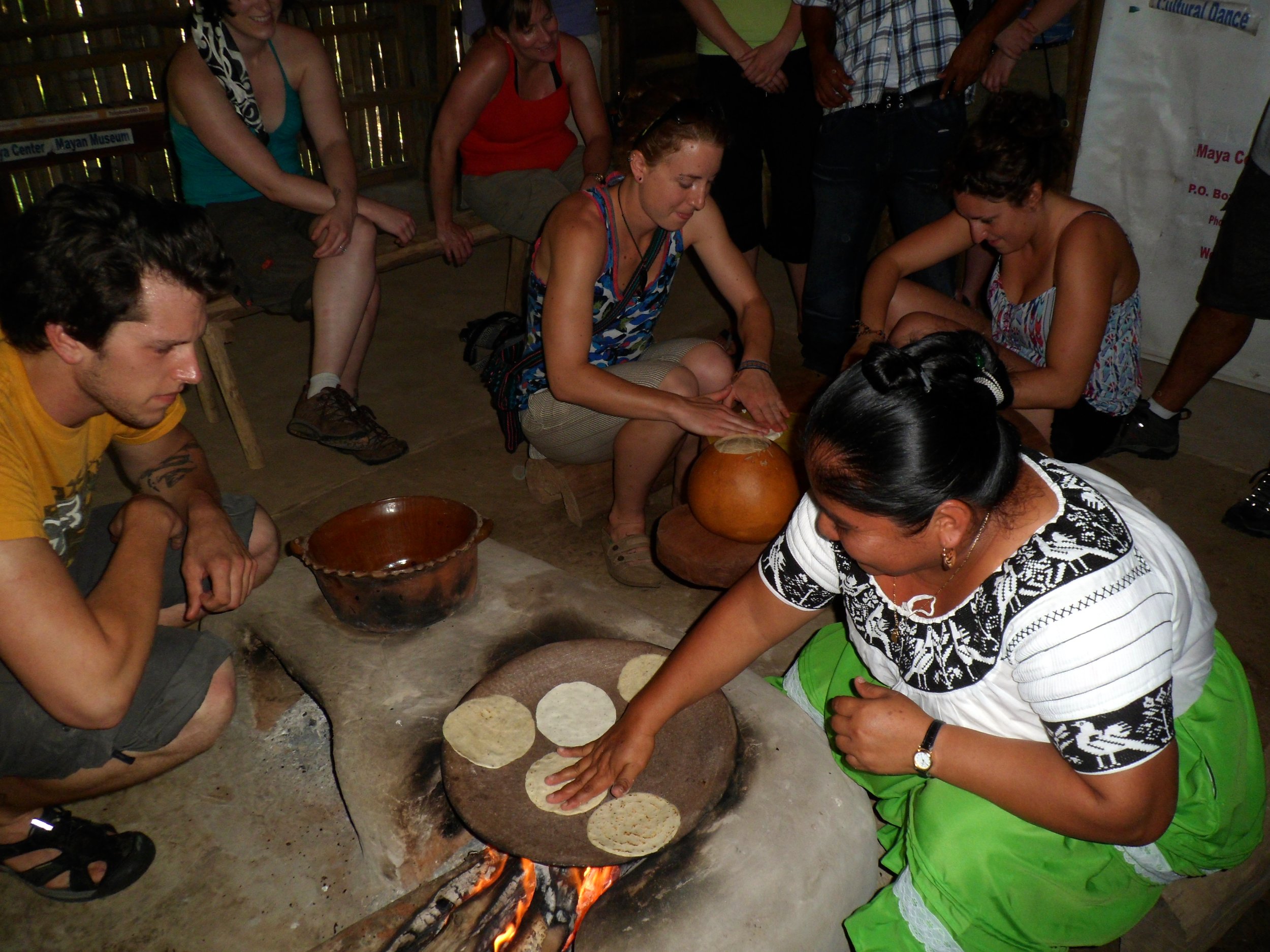Why Belize for Education and Research?
The reef
World Class work of creation and evolution. The 2nd largest barrier reef in the world runs all along Belize’s coast. Islands, beaches, boating, snorkeling, diving and fishing activities sustain many livelihoods and attract more tourists every year. The 175-mile long Mesoamerican Barrier Reef System (MBRS) is a World Heritage Site and Belizeans support environmental legislation that established and enable maintenance and protection of marine protected areas beneficial to sustaining and protecting marine products and biological diversity while promoting nature-based tourism.
Ancient History & the Mayan Monuments
Belize and the surrounding countries have some serious history dating back millennia. The Maya Civilisation flourished in this area for hundreds of years, peaking around 800 AD. At that time it is believed the population of Belize was significantly greater than it is today – by up to 4 times the current 397,621 pop. today. Leaving behind pyramids and temples, pottery and jewelry, the landscape (and even the islands and wetlands) is scattered with impressive and lasting Maya structures & forest gardens. Today’s Modern Maya communities of Belize are many and thriving.
Wildlife
Belize has a low human population density. There still is very limited industrial development. Part of Belize’s “Brand” is nature and wildlife. Infrastructure and the economy are seriously underdeveloped – and very poor. The plus side of this reality is that there is much old growth savannas, wetlands, and tropical forests available for wildlife to flourish and roam Belize. Biological corridor linkages help maintain and protect the predators. The government and citizens of Belize know this is an attraction for tourists and go out of their way to protect wild animals, birds and their natural habitats so that visiting guests can enjoy them in their natural, healthy environment. The Annual Christmas Bird Count events (4 total) in December, organized by Belize Audubon Society, are open to all at no cost.
The Culture
Authenticity and humor marks local character. Ex-pats here say they’ve visited a bunch of countries and never met a friendlier or more welcoming, ethnically diverse population. People are relatively unified and proud of their sovereign independence, peaceful co-existence the Americas, and an abundance of natural resources. Local people call Belize population “Boil Up” (a local dish that mixes ingredients from both land and sea). Many Belizeans speak English, and some other languages, including Spanish, Maya (Mopan, Kekchi and Yucatec dialects) and everyone’s favorite, Kriol/Creole. Based mainly in English but heavily accented with lots of distinct words, phrases and accents, you can keep yourself busy for hours working on the basics. Spanish language village homestays are available too!
GEOGRAPHY & NATURAL BEAUTY
Geographic variety and accessibility of the mainland from the cayes and vice-versa allows for one to travel the watershed continuum. Maya Mountains link to the karst foothills to pine savanna and mangrove lagoons. This flow of fresh water enters the Caribbean and feeds seagrass beds, coral patches and barrier reef structure; connecting the land with the sea. It’s a beautiful green and blue transect. The entire country is slightly smaller than Massachusetts, only about 9,000 square miles; 220 miles north to south and only 80 miles east at the coast to western border with Guatemala. Water falls, the amazing Belize Zoo, tubing through underground caves… Belize is a country where you can go from a sandy beach to a wildlife-filled jungle in a few hours (or less).
Music, Dance, & Art
is the heartbeat of this little nation. On many public buses, music will often be playing loud enough from the front speakers so that the folks at the back can hear it loud and clear. Popular music genres includes reggae, reggaeton, punta, soca, brukdown, dancehall, hip-hop, r&b, boom & chime bands, calypso and country music for local flavor. Belizeans of all backgrounds love to dance “Punta”, a rhythmic dance to the African influenced beats of Garifuna music. The diversity of highly skilled artisans adds a unique texture to life in Belize. Here, you can find people who still make their wares in ‘the old ways.’ A hand-stitched Maya tapestry, a hand stretched goatskin drum, or a ‘dugout’ canoe carved from a solid tree trunk, to name a few. These items of the past and present exist side by side with the works of young and innovative Belizean artists who are pushing the boundaries of contemporary Belizean art. The opportunities for cultural exchange and learning in the arts abound here.
The Whole Country is Our Classroom
In 1990 we established an environmental education center to host field researchers and education abroad students. Tropical Biology, Watersheds and Marine Science were our primary interest groups for years, About 5 years ago, other academic disciplines begin to recognize the wealth of experiential learning opportunities available in this culturally diverse, English speaking country. Today Belize hosts academic study abroad programs from all over the map with experiential learning and cultural immersion ranging from Political Science, Community Health, Ecotourism, Archaeology, Education, Natural Resources Management, Business Entrepreneurship, Cultural Diversity, Community Service, Latin America History, Africology, Permaculture, and most all of the Information, Natural and Social Sciences. It’s the biggest and most diverse and active campus many have ever lived and studied in.







